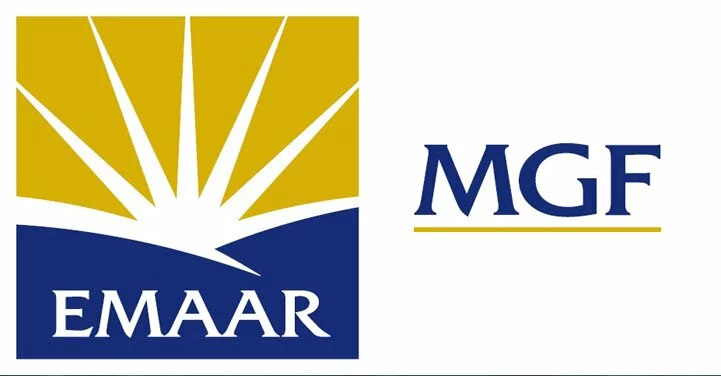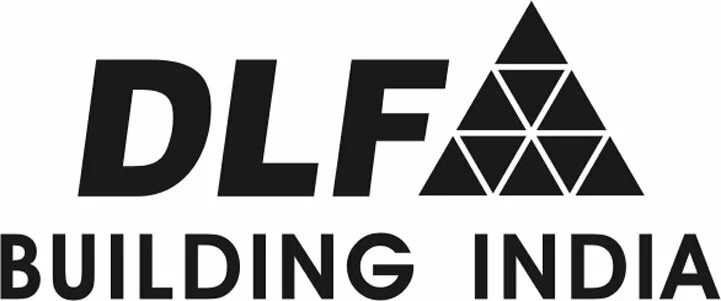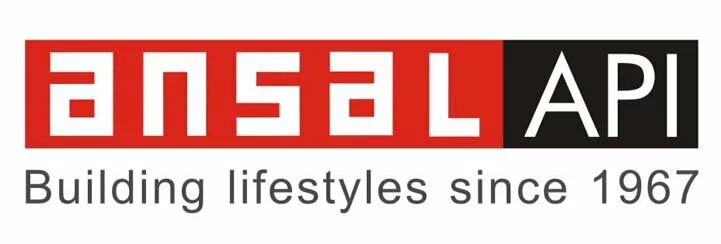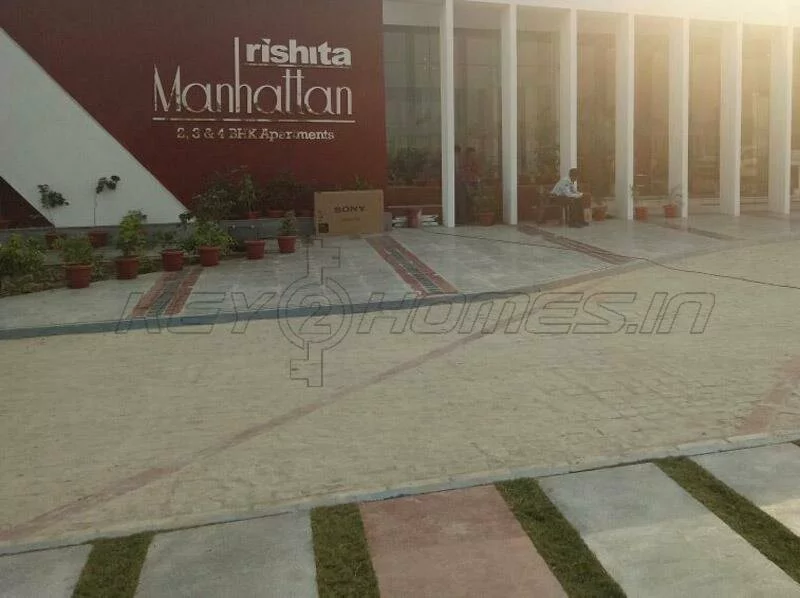Home Loan A Complete Guide
“A sum of money borrowed from a financial institution or bank to purchase a house. Home loans consist of an adjustable or fixed interest rate and payment terms.”
ELIGIBILITY
Owning a house is a dream for every human being. After the economic liberalisation and competition among retail finance companies, it’s easier to get a home loan now. However, there are eligibility criteria that has to be met. You cannot get any amount of home loan irrespective of your income. The amount of loan given by financial institutions depend on lots of factors including your income, age, qualification, work experiences, Number of dependents, spouse’s income, stability of income and employment, assets, liabilities, etc;
“HOME LOAN is one of the best service given by banks, this can makes our dream true, so be smart person for taking advantage of home loan and be real for fulfilling your dream”
Home Loan: The Process
The various stages of a home loan, since application till the actual sanction.
Now that you have selected the property and have an idea about your loan eligibility, the next step is to apply for the home loan. The tips below help you make the home loan process least painful.
The Home Loan Roadmap
The process of taking a home loan can be daunting, especially if you have never applied for any loan earlier. And ignorance on your part can not only make it an unpleasant experience, but also prove to be costly. Here is a step-by-step guide to equip you with the right info, so you know what to expect.
From applying for a home loan to getting it involves various stages. These are:
- Step 1: Application form
- Step 2: Personal Discussion
- Step 3: Bank’s Field Investigation
- Step 4: Credit appraisal by the bank and loan sanction
- Step 5: Offer Letter
- Step 6: Submission of legal documents & legal check
- Step 7: Technical / Valuation check
- Step 8: Valuation
- Step 9: Registration of property documents
- Step 10: Signing of agreements and submitting post-dated cheques
- Step 11: Disbursement
1. Applying for a loan
Filling up the application form is the first step. The look of an application form may differ from bank to bank, but nearly 80 per cent of the information they need is similar. Most of this is basically your personal and professional information, details of your financial assets and liabilities and the details of the property (if finalised) including the estimated cost and the means of financing the same.
Documents to submit:
While submitting the application form, every bank asks for several documents. And most banks these days provide doorstep service, so that you don’t have to spend time visiting their office to submit the documents. However, some banks still insist on the customer visiting their offices at least once.
Proof of income: This will need to be backed up by proof such as copies of last three years’ Income Tax returns (along with copies of Computation of Income/Annual accounts, if any), Form 16/Form 16A, last three months’ salary slips, copies of the last 6 months’ statements of all your active bank accounts in which your salary/business income details are reflected, etc. Other documents that you need to provide with your application form include age proof, address proof and identification proof. You may also be asked to give your employment details.
Age proof : Copy of your school leaving certificate/Driving licence/Passport/ration card/PAN card/Election Commission’s card/etc.
Address proof : Similar documents need to be provided to prove that you are actually staying at your current address.
Identification proof : Same as above, but with photograph. Sometimes, the same document if it contains a photograph, the current residential address and the correct age can be the proof for all 3 things.
Your employment details: If your company is not well-known, then a short summary about the nature of the company, its business lines, its main customers, its competitors, number of offices, number of employees, turnover, profit, etc may be needed. Usually, the company profile that is available on the standard website of the company is enough.
Financial check
All the income-related documents you submit serve a specific purpose. The lending institution uses them to study your financial status.
The bank statements you submit are scrutinised for:
* Level of activity in the case of self-employed persons, this gives a very good clue about the extent of business activities.
* Average bank balance a cursory glance at the average bank balances maintained in a savings bank account speaks volumes about the spending/saving habits of any individual.
* Cheque returns a small charge debited by your bank in the statement indicates that a cheque issued by you was returned by your bank. Many such cheque returns can have a negative impact on your loan sanction.
* Cheque bounces if cheques deposited by you are returned by the issuer’s bank, they will be visible in your bank statement and again, banks have specific norms as to how many such returns are acceptable in a period of one year.
* Regular periodic payments the existence of periodic payments to other finance companies /banks etc. indicate an existing liability and you will need to provide full details to the lender.
Note: Your investments also come under the scanner . This helps the bank to estimate your ability to pay the down payment as well as your savings habit.
Processing Fee
Along with the application form and the credit documents, banks ask for a processing fee. This fee varies from bank to bank, but is usually around 0.25% to 0.50% of the total loan amount. For instance, if you take a loan of Rs 10 lakh, you will have to pay around Rs 2,500 to Rs 5,000 as processing fee. The agent dealing with you earns a commission from the bank, which to some extent is also affected by the amount of fees paid by you.
Most banks have flexible fee structures, and it is advisable that you negotiate hard to find out the bank’s minimum possible fees though it is unlikely that a bank will agree to provide a loan without any upfront fee at all. Some banks have zero upfront fee loans , but that advantage may be negated as their other charges such as “legal charges” and “stamp duty” are normally higher.
This fee is collected to maintain your loan account, and includes work like sending Income Tax certificates every year, maintaining post-dated cheques, etc.
2. Personal discussion: Face to face
after you’ve formally and successfully completed the application process, all you have to do is wait till the home finance institution evaluates your papers. The wait normally lasts only a day or two or sometimes even less. However, some banks insist on meeting you after receiving the application form, and before the loan sanction. This is to gather more details about you that may not be mentioned in the application form and to reassure them of your repayment capacity.
Again, this stage is insisted upon only in very few cases these days.
3. Field Investigation: Checking you out
Thousands of people apply for loans everyday. And however eager a bank is to complete its targets, every loan is a risk. So, it is only natural that it confirms or validates the details you provide. The bank checks all your information including your existing residential address, your place of employment, employer credentials (if you work for a small organisation), residence and work telephone numbers. Representatives are sent to your workplace or residence to verify the details.
Even the references you have provided in the application form are checked out. While this may sound irritating and an invasion of your privacy, banks are forced to undertake validation in the absence of any credit bureau. Once your credentials are validated, it helps establish trust between you and the bank.
4. Credit appraisal and loan sanction: Getting the nod
This is the make-or-break stage. If the bank is not convinced about your credentials, your application may get rejected. If it is satisfied, it sanctions your loan.
The bank or the home financier establishes your repayment capacity based on your income, age, qualifications, experience, employer, nature of business (if self employed), etc, and based on these, works out your maximum loan eligibility, and the final loan amount is communicated to you. The bank then issues a sanction letter. This letter may either be an unconditional letter, or may have certain terms and conditions mentioned, which you have to fulfill before the loan disbursal.
5. Offer letter: I do…
Once the loan is sanctioned, the banks sends you an offer letter mentioning the following details:
- loan amount
- Rate of Interest
- Whether fixed or variable rate of interest linked to a reference rate
- Tenure of the loan
- Mode of repayment
- If the loan is under some special scheme, then the details of the scheme
- General terms and conditions of the loan
Acceptance copy
If you agree with what is mentioned in the offer letter from the bank, you will have to sign a duplicate letter of the same for the bank’s records. Earlier, banks used to charge administrative fees along with the offer letter. However, with rising competition, administrative fees have virtually disappeared from the home loan market.
6. The legal angle: Property and papers
Now, the focus of the bank’s activities shifts from you to the property you intend to buy. Once you select your property, you need to hand over the entire set of original documents pertaining to your property to the bank so that it can keep them as security for the loan amount given to you. These normally include:
The title documents of your seller, which prove the seller’s title including the chain of title documents if he is not the first owner.
NOCs from the legal owners such as cooperative housing societies, statutory development authorities, the lessor of the land in the case of leasehold land, etc. NOCs are not required where the property is situated on freehold land and the entire land is being transferred along with the structure.
These documents remain in the bank’s custody until the loan is fully repaid.
Legal check
Every bank conducts a legal check on your documents to validate their authenticity. Even the draft sale documents that you will be entering into with your seller will be scrutinised.
The documents are sent to a lawyer in their panel (either in-house or outsourced) for a thorough scrutiny. The lawyer’s report either gives a go-ahead if documents are clear, or it may ask for a further set of documents. In the latter case, you are expected to hand over the additional documents to the bank for a clear title.
So, if a bank decides to disburse your housing loan , you have every right to smile, since you can safely assume that your property documents are clear and the transaction is safe.
7. Technical / Valuation check: Making doubly sure
Banks are extremely careful about the property they plan to finance. They send an expert to visit the premises you intend to purchase. This expert could either be a bank employee or he could belong to a firm of architects or civil engineers.
Site visit
The site visits to your property are conducted to verify the following:
In case of under construction property
- Stage of construction is the same as that mentioned in the payment notice given to you by the builder.
- Quality of construction
- Satisfactory progress of work.
- Layout of flats and area of property is within permissions granted by the governing authority.
- The builder has the requisite certificates to start construction at the site.
- Valuation of the property in relation to other deals in the surrounding areas.
In case of ready/resale construction
- External / internal maintenance of the property.
- The age of the building.
- Will the building last the loan tenure? This has a direct bearing on your loan eligibility, since the loan tenure will be restricted to the maximum age of the property as decided by the bank’s engineer and this will impact your loan eligibility.
- Quality of construction.
- Surrounding area (development).
- Whether the builder has received the requisite certificates for handing over possession of the flat.
- There is no existing lien or mortgage on the property.
- Valuation of the property in relation to other deals in the surrounding areas.
- These inspections are carried out to protect consumer interests in terms of construction quality, adherence to local laws, approved building plans, etc. A technical inspection also lets the bank understand the progress of construction so as to release the staggered disbursements.
8. Valuation: Reality check
Since housing loans are cheaper than other loans, there have been cases where individuals have shown purchase of properties from related entities at inflated prices to obtain cheap loans.
Since the risk associated with diversion of funds is higher than if the loan was used for genuine purposes, banks carry out an independent valuation to find out whether the transaction is in line with the existing market price of the area.
Valuation has become a key parameter in determining the loan amount that can be sanctioned by the bank. The valuation process is quite subjective and depends on the quality and ability of the person sent by the bank for valuation.
Valuation of real estate as a profession is still in its infancy in India and is still non-standardised. In many cases, the valuer determines the value of the property at an amount that is lower than the documented cost of the property and this would result in the loan amount being lower, since the bank funds a certain percentage of the cost or valuation of the property, whichever is lower.
This practice has led to severe consumer issues in an increasing number of cases, as the valuation is normally done only after the consumer takes a sanction (by paying a fee) and after identifying and committing to buy the property.
The valuation issue rarely arises when a property is purchased through a reputed builder directly or if the property is pre approved. In both the cases, the banks would have already completed the valuation and therefore, you can safely assume that there is no difference between the documented cost of the property and the bank’s valuation amount.
9. Registration: Sealing the deal
After the legal and technical / valuation check, the draft documents as cleared by the lawyer need to be finalised and signed and the stamping and registration of the documents need to be done. Also, if any NOCs are pending, these need to be obtained in the format approved by the bank’s lawyer.
10. Signing the home loan agreement: In black & white
All borrowers need to sign the home loan agreement. You also need to submit post-dated cheques for the first 36 months (if that is the agreed mode of repayment). The original property documents have to be handed over to the bank at this stage. Some banks also create a document recording the handing over of the property documents to them as security for the due repayment of the home loan.
This document is also called a memorandum of entry and attracts significant stamp duty depending on the amount of the loan in some states. The stamp duty payable on such a memorandum is naturally recovered from you.
Not all banks create this memorandum and hence the stamp duty may or may not be payable, depending on the practice of the specific bank. However, even where no such memorandum of entry is created, the state government concerned may, in the future, demand a stamp duty on the loan transaction, which naturally is recoverable from you as per the home loan agreement signed by you.
11. Disbursement: The big payout
After the bank has ensured that the property is legally and technically clear, all the original documents pertaining to transfer of ownership of property in your favour have been submitted and all the necessary loan agreements have been executed, finally, it is payment time! You will now actually receive the cheque in your hand. Time to celebrate! But hold on a second. Before the big moment arrives, you need to submit documents to prove that you have paid your personal contribution towards the property, since banks normally finance only up to 85-90 per cent of the total cost of the house.
In case you are expecting money from other sources to fund your own contribution, you need to provide sufficient evidence for the same. It is only after submitting this proof that the bank will release part-disbursement of the loan.
The cheque will be in the name of the reseller (for resale flats), builder, society or the development authority. It is only in exceptional circumstances, that is, if you provide documents to support that you have made an excess payment from your own account that the cheque will be handed over to you directly by the bank.
Part disbursement : When a loan is partly disbursed, the bank does not start EMIs immediately, since it is calculated on the total loan amount at a particular rate of interest and for a given tenure. Moreover, it normally does not start breaking up the installments into its principal and interest components until the entire loan amount is disbursed.
To overcome this difficulty, banks charge simple interest on the partly disbursed loan amount. For instance, if you have a sanctioned loan of Rs10 lakh, but the property is under construction and the bank has disbursed only Rs4 lakh, you will be charged a simple interest only on the disbursed amount. This process continues until the final disbursement takes place. The simple interest paid is called Pre-emi interest or Pre-emi.
At this stage, banks may take only around three to six post-dated cheques on account of Pre-emi.
Full and final disbursement : If it is a ready-possession property, the bank disburses the entire loan amount in favour of either the reseller or the builder.
Repayment
The loan is generally repaid by equated monthly installments, using post-dated cheques. Banks usually ask for 12, 24 or 36 PDCs, after which you need to repeat the process until you have repaid the loan. Some banks may also insist on a cheque for an amount equivalent to the loan outstanding at the end of PDC period to ensure timely replenishment of PDCs for the next 12, 24 or 36 months as the case may be.
In case your installments are to be deducted against your salary, you need a letter from your employer accepting this arrangement and directly remitting the amount to the bank every month. This is possible only if your organisation has an arrangement with the bank for all employees.
Some banks allow you to give standing instructions to the bank where you have your savings/current account to deduct money each month crediting your home loan account.
Some banks allow the monthly installments to be paid by convenient ECS facility.
Another possible mode of payment is by cash or demand draft (not all banks offer this). You can deposit the EMI every month at the bank’s office.
Income Tax certificate
Every bank issues an income tax certificate that serves as requisite proof to let you avail of tax benefits that accrue on repayment of a home
loan . This will typically contain the total amount of interest and capital repaid during the year.
This is mandatory to claim the tax benefit in respect of self-occupied property. You will have to file this with your tax returns and submit this to your employer or chartered accountant to calculate your tax liability.
Prepayment
You can prepay a loan either in part or in full at any given point of time. You can also prepay it even when it is only partly disbursed. However, most banks have an upper limit on the number of times a person can prepay his loan in a year as well as on the minimum amount you can prepay each time.
Until recently, banks charged a penalty for part or full prepayment. But increased competition has forced most banks to allow partial prepayment at nil charge.
Most banks levy a prepayment charge if you make full repayment and ask for release of your property documents.
Loan pre-closure/satisfaction
You also have the option of completely repaying the loan at any time. Of course, each bank has its conditions for preclosure. Also, the loan will get completely paid off on the expiry of the tenure of the loan if you have paid all your installments on time.
Once you have completely repaid your loan, ensure that the entire set of original property documents is handed back to you.You should also ask the bank for a No-Objection Certificate saying the account has been cleared. As an option, the bank may issue a consent letter stating that the property is now free from mortgage.
If you have guarantors, the bank will issue a separate letter for each of the guarantors stating that their liability has come to an end. Only after you receive these documents can you say that the property is now completely free of mortgage.
At this stage, in some cases, you may discover that the original documents have yet not been received by the bank from the registrar. In such cases, you will need to follow up with the registrar and get the documents from them directly by showing them a copy of the bank’s clearance certificate.
Sometimes, (and we must stress only sometimes) the bank may misplace your original property documents leading to avoidable stress. In fact, the bank may claim that these documents were never given to them at all. Hence the importance of insisting on a proper receipt of title documents while handing them over to the bank.
Remember that receipt will come in very useful when the loan is fully paid off. Also, it is extremely useful when you want to shift your loan to a new lender.
Document Checklist for Self Employed Professionals:
Documents asked by banks for sanctioning home loans for Self Employed Professionals are simple compared to other Self Employed Non Professionals. The common documents asked by banks for Self Employed Professionals (SEPs) are:
- Duly Signed Application Form with Passport Size Picture
- KYC Norms including identity, residence and Age Proof
- Bank Statement ( last one year’s)
- Brief Business Profile on the Letter Head of the firm by the applicant
- Education qualification certificate and proof of business existence
- Latest 2 years Income Tax Returns with computation of Income
- Latest 2 years CA Certified / Audited Balance Sheet and Profit & Loss Account
- Documents Checklist
- Cheque for Home Loan Processing Fee
Document Checklist for Self Employed Non Professionals (Businessmen):
For all self employed businessmen and entrepreneurs, it is helpful to keep their business transactions clean and transparent as it can help for easier facilitation of a home loan. Start-up entrepreneurs will usually have a tough time in getting home loans sanctioned, as banks will be uncertain in the viability of their business and its success rate.
Moreover, as per the document checklist of banks, 3 years ITR is a must and therefore, young entrepreneurs in most cases will have to wait for at least 2 years after starting a business to get a home loan sanctioned.
However, there are certain exceptions. Companies with good returns and a great business plan can try their luck in getting loans sanctioned in the initial years. If the bank’s credit manager is impressed by your business plan, or if he /she is sure about the success rate, there are chances for some waivers in this rule, especially, if your parents or a working spouse can stand as a guarantor for your home loan application.
Usually banks look for a gross annual income above Rs. 1, 50,000 for the business owner. The age for home loan borrower in case of a self-employed professional must be above 23 years with a maximum age limit of 58 years. The business must be successfully operational for the last three years to be eligible for home loan application. Proof of business existence along with partnership deed in case of a partnership form must be attached along with other essential documents as listed below.
Following are the documents required for sanctioning home loans for self-employed businessmen
- Duly Signed Application Form with Passport Size Picture
- KYC Norms including identity, residence and Age Proof:
- Updated Bank Statement ( for last 2 years )
- Brief Business Profile on the Letter Head of the firm by the applicant
- Proof of business existence
- Business plan copy
- Copy of Shop & Establishment License / VAT Registration or any other mandatory license / registration
- Copy of the Partnership Deed (if applicable)
- 3 years Income Tax Returns with computation of Income
- 3 years CA Certified / Audited Balance Sheet and Profit & Loss Account
- Cheque for Home Loan Processing Fee
Documents needed for Salaried Person: GOVT./PVT.
Obtaining a home loan is comparatively easier now a days. However, there are eligibility criteria that have to be met. You can not get any amount of home loan irrespective of your income. The amount of loan given by financial institutions depend on lots of factors, including your income, age, qualifications, work experience, number of dependents, spouse’s income, stability of income and employment, assets, liabilities, etc.
To get any home loan you need to show some relevant documents to support the deal. Salaried people require different documents to support the deal.
The borrower must submit the following documents along with loan application though it can vary slightly depending on the bank:
- Proof of age
- Proof of identity and residence – passport, PAN card, ration card, voter ID card, etc
- Salary slip of last three months along with salary certificate.
- Proof of continuity in the job for last two years or Form 16.
- Bank statement for last six months.
- Company profile for employees of a private limited company.
- Latest property tax paid receipt.
- Sanctioned plan.
- Receipts towards payments already made.
- Sale agreement and title documents in favour of the seller (old flat or house).
- Sale agreement or construction agreement with builder (new flat).
- Total cost break-up on builder’s letterhead (new flat).
During the time of documentation be careful. Do make sure that you always ask for a letter on the banks letterhead mentioning the particulars like exact rate of interest, processing fees, pre-payment charges along with interest-schedule. Checking and re-checking of terms and conditions at the time of signing of the deal is very helpful. Do not sign a document without reading it carefully. If you do not understand a clause consulting a lawyer is a good option. Do not sign the deal in hurry and repent at leasure. It’s better to err on the side of caution. Also ensure that you submit all the correct information to the bank. Giving false information may constitute as fraud and could land you in trouble later.
Home Loan for Pensioners/Retired: Salary, Eligibility, Term, Fees
In India, depending on the grade of the employee of central and state government, defence and others, housing accommodation from their respective organization is provided until they retire or voluntarily retire. Till retirement there is no worry of searching for own house unless and until you have pre-planned of owning a house. Similarly no one thinks of renovating or reconstructing existing house. But what’s next after retirement, for the retired person, whose source of income is monthly pension received from the organization they’ve worked over years?
Here are the most common thoughts that come to mind of seniors:
- Post retirement, where will the pensioner stay (assuming they do not have any other house elsewhere)?
- What if they want to purchase their own house?
- Will they get home loan on the basis of the pension amount they receive for purchasing a new house or reconstruction existing house?
Answer is YES . Many banks or housing finance companies in India offer home loan for pensioners. Here are the details:
Eligibility Criteria: Amongst the various requirements for getting home loan, the important ones are loan limit and repayment period as mentioned in the below table for few banks. For many banks in the below table, loan limit varies according to the age. The table also contains list of lenders (e.g. Bank of India) who also offer normal loans which can be used for only renovating/repair/extension of house. So check with the respective bank on the type of loan and its purpose.
ELIGIBILITY CRITERIA:
| LENDER’S NAME | MAXIMUM LOAN LIMIT ( IN INR ) |
REPAYMENT PERIOD |
| STATE BANK OF INDIA | 1) 7,50,000 TO 14,00,000 | Before applicant reaches the age of 75 years |
| UNITED BANK OF INDIA | 2,00,000 | Before applicant reaches the age of 70 years |
| LIC HOUSING FINANCE | NA | Before applicant reaches the age of 70 years |
| PUNJAB NATIONAL BANK | 5,00,000 TO 10,00,000 |
1) 60EMI’S
2) 24EMI’S
|
| BANK OF INDIA | 5,00,000 | 60EMI’S |
| BANK F BARODA | 5,00,000 TO 8,00,000 | 77 TO 78 YEARS depending on the age at the time loan was sanctioned |
Other factors considered by the lenders before approving home loan for retired persons are:
Pensioner should have been in service with state or central government, PSU, defence, VRS, educational institutions and other reputed companies.
Should be drawing pension from the applied bank only. However this may not be the case with every bank. In such a case, banks might ask for a post-dated cheque for a pre-fixed period of the bank where you hold pension account.
Type of property: Mostly pensioners are eligible to take home loan only when constructing/repair/renovating of new/existing house, buying piece of land, purchasing of readymade house/flat. However the condition is that it should be owned by the applicant.
Minimum monthly pension income received also plays a decisive factor at the time of loan approval. Based on your income, loan limit is calculated. For e.g. United Bank of India asks a minimum salary of Rs. 5, 000. This applies to all the types of loan or credit cards. So if you are a low pension earner, getting a home loan might be tough. Check out home loan for low income earners .
Age: Ideally any bank will offer a loan to pensioner having age less than 75 years. For e.g. United Bank of India does not provide loan, if the applicant is above 70 years.
Points to remember:
Not all banks offer loans to pensioners of other banks. So for e.g. you receive monthly pension from State Bank of India but you apply for loan at Dena Bank then your application might get rejected. Because they offer loans to pensioners of their own bank only. So before application, check with the respective bank on their terms and conditions.
Charges: Along with the interest rate, there are other charges as well. This includes pre-payment fee, upfront fee, and processing fee etc. However as a benefit to the retired person, some banks such as Bank of India and Bank of Baroda do not charge any processing fee for their pension account holder but charges a small fee for other applicants. BoB does not even charge pre-payment fee from seniors. So while applying, make sure to check all the fees and hidden charges so that it does not put strain on your wallet
during retirement.
Read the related article – Home Loan From Government Bank Vs Private Bank – What’s The Difference?


























